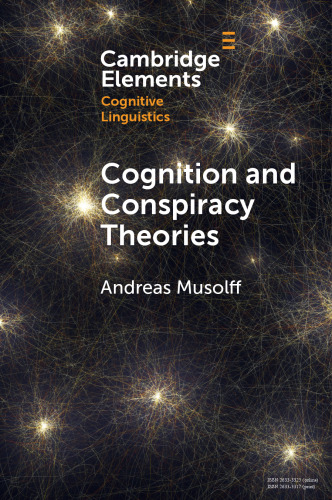Shared Case Formulation and Therapeutic Alliance This book also promotes the idea that the principle of shared case formulation can offer CBT approaches a specific terminology to deal with the so-called common and unspecific therapeutic processes, namely the management of the therapeutic alli- ance and relationship (Asay and Lambert 1999). It is not a coincidence that, in the above-mentioned psychodynamic and constructivist models, cognition is conceived as inseparable from relational experience to such an extent that they consider the relationship as the real significant mediator of the therapeutic change (Bara 2018; Gabbard 2017). Adopting an operationally CBT-specific terminology for the con- cepts of alliance and therapeutic relationship such as “shared case formulation” without borrowing words from approaches that obey different principles allows one to remain focused on the historical proposal of CBT. It also encourages the concep- tualization of the therapeutic alliance in terms that are consistent with the principles of CBT approaches (Bruch 1998, 2015; Sturmey 2008, 2009). In CBT approaches, alliance and relationship are an important pre-condition of the therapeutic process but are not a unit of analysis for the change process. This observation is not coinci- dental; rather, it is significant for maintaining the distinction between CBT approaches and relational models that increasingly; this distinction suggests the resolutive aspects of the therapeutic process are to be found in the therapeutic rela- tionship as, for example, in the case of Wampold and Imel’s model (Wampold and Imel 2015). It is therefore not just a matter of terminology: Words are important and reflect the nature of the theoretical model
چکیده فارسی
فرمولبندی مورد مشترک و اتحاد درمانی این کتاب همچنین این ایده را ترویج میکند که اصل فرمولبندی مورد مشترک میتواند رویکردهای CBT را یک اصطلاح خاص برای مقابله با به اصطلاح فرآیندهای درمانی رایج و غیر اختصاصی، یعنی مدیریت درمان درمانی ارائه دهد. انس و رابطه (آسی و لامبرت 1999). تصادفی نیست که در مدل های روان پویشی و سازه انگاری فوق، شناخت به اندازه ای از تجربه رابطه ای جدایی ناپذیر در نظر گرفته می شود که آنها این رابطه را واسطه واقعی و مهم تغییر درمانی می دانند (بارا 2018؛ گابارد 2017). . اتخاذ یک اصطلاحات عملیاتی ویژه CBT برای مفاهیم اتحاد و رابطه درمانی مانند "فرمول بندی مورد مشترک" بدون وام گرفتن کلمات از رویکردهایی که از اصول مختلف پیروی می کنند، به فرد اجازه می دهد تا بر پیشنهاد تاریخی CBT متمرکز بماند. همچنین مفهوم سازی اتحاد درمانی را در شرایطی تشویق می کند که با اصول رویکردهای CBT سازگار باشد (بروچ 1998، 2015؛ استورمی 2008، 2009). در رویکردهای CBT، اتحاد و رابطه یک پیش شرط مهم برای فرآیند درمانی است، اما واحد تجزیه و تحلیل برای فرآیند تغییر نیست. این مشاهده تصادفی نیست. بلکه برای حفظ تمایز بین رویکردهای CBT و مدلهای رابطهای که به طور فزایندهای مهم است. این تمایز نشان میدهد که جنبههای قطعی فرآیند درمانی را باید در رابطه درمانی یافت، به عنوان مثال، در مورد مدل Wampold و Imel (Wampold and Imel 2015). بنابراین این فقط یک موضوع اصطلاحی نیست: کلمات مهم هستند و ماهیت مدل نظری را منعکس می کنند
ادامه ...
بستن ...
Shared Case Formulation and Therapeutic Alliance This book also promotes the idea that the principle of shared case formulation can offer CBT approaches a specific terminology to deal with the so-called common and unspecific therapeutic processes, namely the management of the therapeutic alli- ance and relationship (Asay and Lambert 1999). It is not a coincidence that, in the above-mentioned psychodynamic and constructivist models, cognition is conceived as inseparable from relational experience to such an extent that they consider the relationship as the real significant mediator of the therapeutic change (Bara 2018; Gabbard 2017). Adopting an operationally CBT-specific terminology for the con- cepts of alliance and therapeutic relationship such as “shared case formulation” without borrowing words from approaches that obey different principles allows one to remain focused on the historical proposal of CBT. It also encourages the concep- tualization of the therapeutic alliance in terms that are consistent with the principles of CBT approaches (Bruch 1998, 2015; Sturmey 2008, 2009). In CBT approaches, alliance and relationship are an important pre-condition of the therapeutic process but are not a unit of analysis for the change process. This observation is not coinci- dental; rather, it is significant for maintaining the distinction between CBT approaches and relational models that increasingly; this distinction suggests the resolutive aspects of the therapeutic process are to be found in the therapeutic rela- tionship as, for example, in the case of Wampold and Imel’s model (Wampold and Imel 2015). It is therefore not just a matter of terminology: Words are important and reflect the nature of the theoretical model
ادامه ...
بستن ...
xiii
Contents
Shared Case Formulation as the Main Therapeutic Process
in Cognitive Therapies . . . . . . . . . . . . . . . . . . . . . . . . . . . . . . . . . . . . . . . . . . 1
Giovanni Maria Ruggiero, Gabriele Caselli, and Sandra Sassaroli
Case Formulation in Standard Cognitive Therapy . . . . . . . . . . . . . . . . . . . 17
Giovanni Maria Ruggiero, Gabriele Caselli, and Sandra Sassaroli
The Conceptualization Process in Cognitive Behavioral
Therapy. Commentary on Chapter “Case Formulation
in Standard Cognitive Therapy” . . . . . . . . . . . . . . . . . . . . . . . . . . . . . . . . . . 35
Arthur Freeman
Case Formulation in Standard Cognitive Therapy:
A Commentary on Chapter “Case Formulation
in Standard Cognitive Therapy” . . . . . . . . . . . . . . . . . . . . . . . . . . . . . . . . . . 39
Steven D. Hollon
Commentary to Chapter “Case Formulation in Standard
Cognitive Therapy”: The Use of Goals in Cognitive Behavioral
Therapy Case Formulation . . . . . . . . . . . . . . . . . . . . . . . . . . . . . . . . . . . . . . 45
Angelo Maria Saliani, Claudia Perdighe, Barbara Barcaccia,
and Francesco Mancini
Case Formulation in the Behavioral Tradition: Meyer, Turkat,
Lane, Bruch, and Sturmey . . . . . . . . . . . . . . . . . . . . . . . . . . . . . . . . . . . . . . . 59
Giovanni Maria Ruggiero, Gabriele Caselli, and Sandra Sassaroli
Some Thoughts on Chapter “Case Formulation in the Behavioral
Tradition: Meyer, Turkat, Lane, Bruch, and Sturmey”
by Giovanni Maria Ruggiero, Gabriele Caselli and Sandra Sassaroli. . . . 73
Peter Sturmey
xiv
How B-C Connection, Negotiation of F and Rationale
of D Allow the Design and Implementation of a Cooperative
and Effective Disputing in Rational Emotive Behavior Therapy . . . . . . . . 79
Giovanni Maria Ruggiero, Diego Sarracino, Gabriele Caselli,
and Sandra Sassaroli
Commentary on Chapter “How B-C Connection and Negotiation
of F allow the Design and Implementation of a Cooperative
and Effective Disputing in Rational Emotive Behavior Therapy”:
REBT’s B-C Connection and Negotiation of F . . . . . . . . . . . . . . . . . . . . . . 89
Raymond DiGiuseppe and Kristene Doyle
Commentary on Chapter “How B-C Connection and Negotiation
of F Allow the Design and Implementation of a Cooperative
and Effective Disputing in Rational Emotive Behavior Therapy”:
REBT Provides a Firm Basis for Case Formulation by Employing
an Ongoing, Implicit and Hypothetico-Deductive form of Data
Collection in Critical Collaboration, Negotiation and
an Equal Relationship with the Client . . . . . . . . . . . . . . . . . . . . . . . . . . . . . 99
Wouter Backx
Case Formulation in Process-Based Therapies . . . . . . . . . . . . . . . . . . . . . . 107
Giovanni Maria Ruggiero, Gabriele Caselli, Andrea Bassanini,
and Sandra Sassaroli
Commentary on Chapter “Case Formulation in
Process-Based Therapies”: Process Based CBT as
an Approach to Case Conceptualization . . . . . . . . . . . . . . . . . . . . . . . . . . . . 123
Avigal Snir and Stefan Hofmann
Clinical Behavior Analysis, ACT and Case Formulation.
A Commentary on Chapter “Case Formulation in
Process-Based Therapies” . . . . . . . . . . . . . . . . . . . . . . . . . . . . . . . . . . . . . . . 133
Paolo Moderato and Kelly G. Wilson
Schema Therapy, Contextual Schema Therapy and
Case Formulation: Commentary on Chapter “Case
Formulation in Process-Based Therapies” . . . . . . . . . . . . . . . . . . . . . . . . . . 139
Eckhard Roediger, Gabriele Melli, and Nicola Marsigli
Strengths and Limitations of Case Formulation in Constructivist
Cognitive Behavioral Therapies. . . . . . . . . . . . . . . . . . . . . . . . . . . . . . . . . . . 143
Giovanni Maria Ruggiero, Gabriele Caselli, and Sandra Sassaroli
A Constructivist Pioneer of Formulation: A Commentary
on Chapter “Strengths and Limitations of Case Formulation
in Constructivist Cognitive Behavioral Therapies” . . . . . . . . . . . . . . . . . . . 163
David A. Winter and Guillem Feixas
Contents
xv
Commentary on the Presentation of the Metacognitive
Interpersonal Therapy Model in Chapter “Strengths
and Limitations of Case Formulation in Constructivist
Cognitive Behavioral Therapies”. . . . . . . . . . . . . . . . . . . . . . . . . . . . . . . . . . 171
Antonino Carcione and Antonio Semerari
The Role of Trauma in Psychotherapeutic Complications
and the Worth of Giovanni Liotti’s Cognitive-Evolutionist
Perspective (CEP): Commentary on Chapter “Strengths
and Limitations of Case Formulation in Constructivist
Cognitive Behavioral Therapies”. . . . . . . . . . . . . . . . . . . . . . . . . . . . . . . . . . 177
Benedetto Farina
The Case Formulation in the Post-Rationalist
Constructivist Model: Commentary on Chapter “Strengths
and Limitations of Case Formulation in Constructivist
Cognitive Behavioral Therapies”. . . . . . . . . . . . . . . . . . . . . . . . . . . . . . . . . . 191
Maurizio Dodet
Case Formulation and the Therapeutic Relationship
from an Evolutionary Theory of Motivation: Commentary
to Chapter “Strengths and Limitations of Case Formulation
in Constructivist Cognitive Behavioral Therapies” . . . . . . . . . . . . . . . . . . . 201
Fabio Monticelli
Emotion, Motivation, Therapeutic Relationship and Cognition
in Giovanni Liotti’s Model: Commentary on Chapter
“Strengths and Limitations of Case Formulation in
Constructivist Cognitive Behavioral Therapies” . . . . . . . . . . . . . . . . . . . . . 211
Raffaella Visini and Saverio Ruberti
Case Formulation as an Outcome and Not an Opening
Move in Relational and Psychodynamic Models . . . . . . . . . . . . . . . . . . . . . 217
Giovanni Maria Ruggiero, Gabriele Caselli, and Sandra Sassaroli
Commentary to Chapter “Case Formulation as an Outcome
and Not an Opening Move in Relational and Psychodynamic
Models”: Plan Formulation Vs. Case Formulation:
The Perspective of Control-Mastery Theory . . . . . . . . . . . . . . . . . . . . . . . . 233
Francesco Gazzillo and George Silberschatz
Some Historical and Theoretical Remarks About
Psychodynamic Assessment. Commentary on Chapter
“Case Formulation as an Outcome and Not an Opening
Move in Relational and Psychodynamic Models” . . . . . . . . . . . . . . . . . . . . 239
Marco Innamorati and Mariano Ruperthuz Honorato
Contents
xvi
Case Formulation in Psychoanalysis and in Cognitive-Behavioral
Therapies: Commentary on Chapter “Case Formulation as
an Outcome and Not an Opening Move in Relational
and Psychodynamic Models” . . . . . . . . . . . . . . . . . . . . . . . . . . . . . . . . . . . . . 247
Paolo Migone
The Empirical State of Case Formulation: Integrating
and Validating Cognitive, Evolutionary and Procedural
Elements in the CBT Canse Formulation
in the LIBET Procedure . . . . . . . . . . . . . . . . . . . . . . . . . . . . . . . . . . . . . . . . . 255
Sandra Sassaroli, Gabriele Caselli, and Giovanni Maria Ruggiero
Commentary on Chapter “The Empirical State
of Case Formulation: Integrating and Validating
Cognitive, Evolutionary and Procedural Elements
in the CBT Case Formulation in the LIBET Procedure”:
A Constructivist Perspective on LIBET . . . . . . . . . . . . . . . . . . . . . . . . . . . . 285
David A. Winter
New Dimensions in Case Planning: Integration
of E-Mental Health Applications . . . . . . . . . . . . . . . . . . . . . . . . . . . . . . . . . . 291
Christiane Eichenberg
Now’s the Time: CBT Shares Case Formulation
More (but Not Too) Easily . . . . . . . . . . . . . . . . . . . . . . . . . . . . . . . . . . . . . . . 301
Giovanni Maria Ruggiero, Gabriele Caselli, and Sandra Sassaroli
Index . . . . . . . . . . . . . . . . . . . . . . . . . . . . . . . . . . . . . . . . . . . . . . . . . . . . . . . . . 309
ادامه ...
بستن ...










